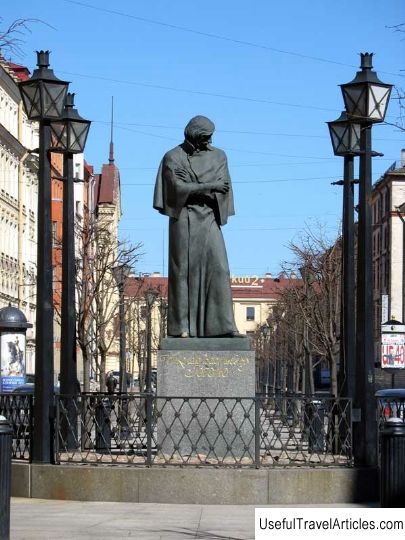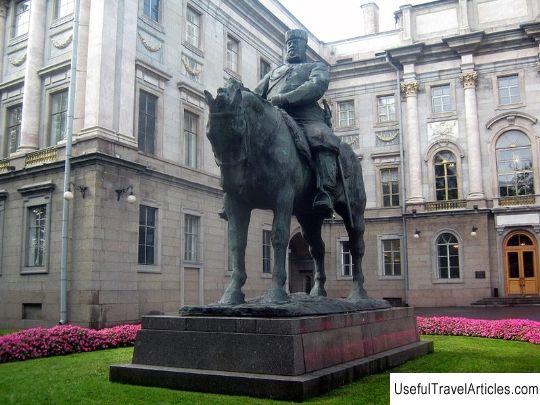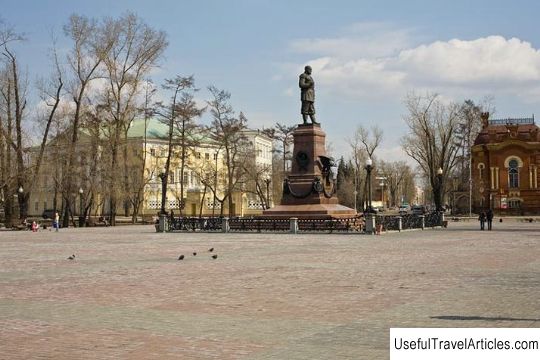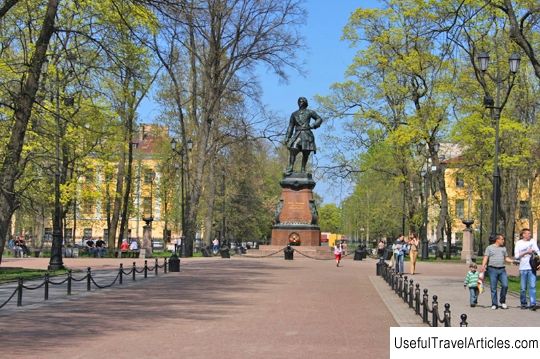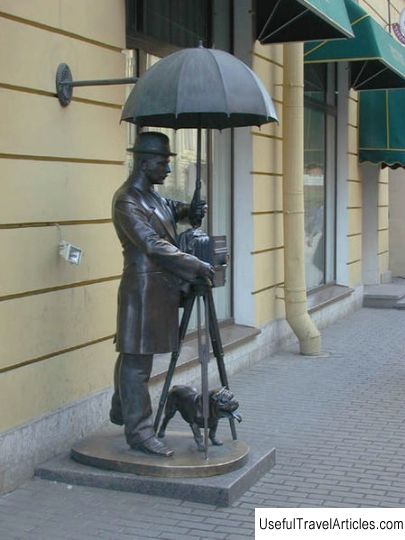Monument to the city governor description and photo - Russia - St. Petersburg: St. Petersburg
Rating: 9,0/10 (1349 votes) 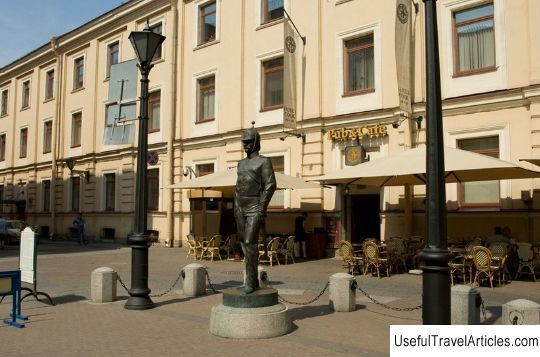
Monument to the city governor description and photo - Russia - St. Petersburg: St. Petersburg. Detailed information about the attraction. Description, photos and a map showing the nearest significant objects. Photo and descriptionAn unusual monument was erected in St. Petersburg in May 1998 on Malaya Konyushennaya street. The opening was timed to coincide with the bicentennial of the Ministry of Internal Affairs and the 300th anniversary of the founding of St. Petersburg. On a gray marble pedestal stands a two-meter-high statue of a policeman, cast in bronze, dressed in full ceremonial ammunition. Initially, the monument caused a storm of emotions among the citizens of the city and was perceived differently. Some considered the monument a reminder of the former “institute of policemen”, according to others, the monument reminded of the lack of rights of ordinary people. At the moment, the monument does not evoke such violent political emotions, the passions around it have subsided. The monument blended into the urban interior and now arouses nothing but the curiosity of others. He stands proudly next to the Church of St. Catherine, at the intersection, which forms the Swedish lane and Malaya Konyushennaya street. Next to the monument is the building where the Swedish consulate is located, and right behind it there is a small, very cozy cafe. Petersburgers joke, they say that the policeman serves to protect these objects. True, he is not very good at it - the walls of nearby houses are "decorated" with so-called wall paintings, or, in other words, the walls are painted with graffiti. True, this painting is not always successful. Today's young generation, most likely, has no idea who the monument was erected to. Peter the First created a special service back in 1718 by his decree. According to his plan, this service was supposed to protect the townspeople from dashing people and keep order. Thus, the people in this service must be good masters of the city, that is, policemen. Hence the name - policeman. Policemen existed for a long time, their functions changed over time, and the service itself was repeatedly reformed. During the reign of Alexander II, policemen began to be called policemen, and a district supervisor appeared (an analogue of a modern district police officer). At that time, only males with a strong physique, tall (from 175 cm and above), and at least 25 years old were selected as police officers. In addition to these criteria, an applicant for the position of a policeman had to have excellent health and eyesight, quick wit. Another important requirement was imposed on them, which would not hurt to be adopted in the selection of modern police officers. The speech of the candidate for the police had to be articulate, literate and well-placed. Applicants for the position of a policeman, after selection, were trained, and after passing the exam they were assigned. For their dangerous, difficult and so necessary service, the policemen received a good salary, and upon retirement they were entitled to a decent pension. The duties of a policeman were different and differed from those of the current police. For example, they controlled street lighting at night, monitored the sanitary condition of retail outlets. At the request of the townspeople, they had to help draw up petitions, complaints to the city authorities. And, of course, the main work consisted of maintaining order day and night, preventing offenses and preventing them. On the territory they were accountable to, the city officers ensured order like good masters. Control over the work of the police was carried out, both open and secret. What had a positive effect on their work, random people did not serve as policemen. The townspeople turned to them on any issue and the policemen did everything in their power, for which they enjoyed their well-deserved respect and authority.      We also recommend reading Rurik's settlement description and photos - Russia - North-West: Veliky Novgorod Topic: Monument to the city governor description and photo - Russia - St. Petersburg: St. Petersburg. |
